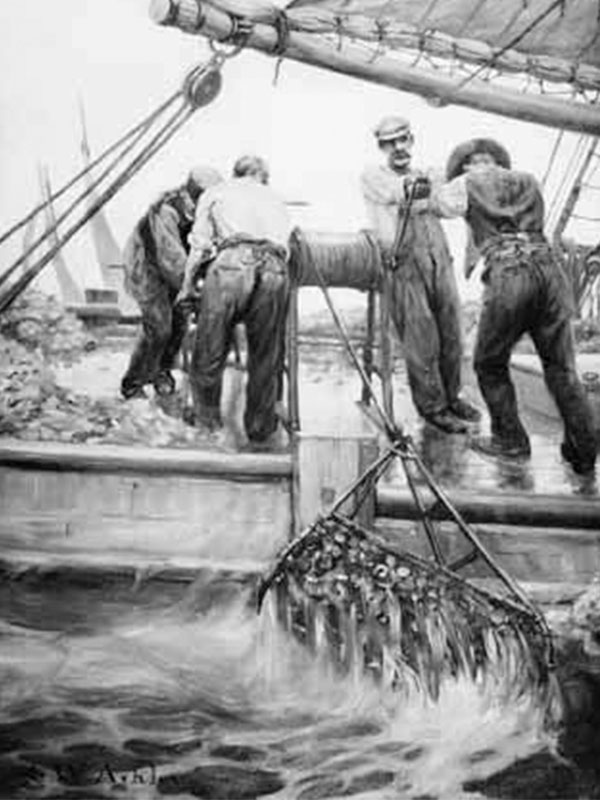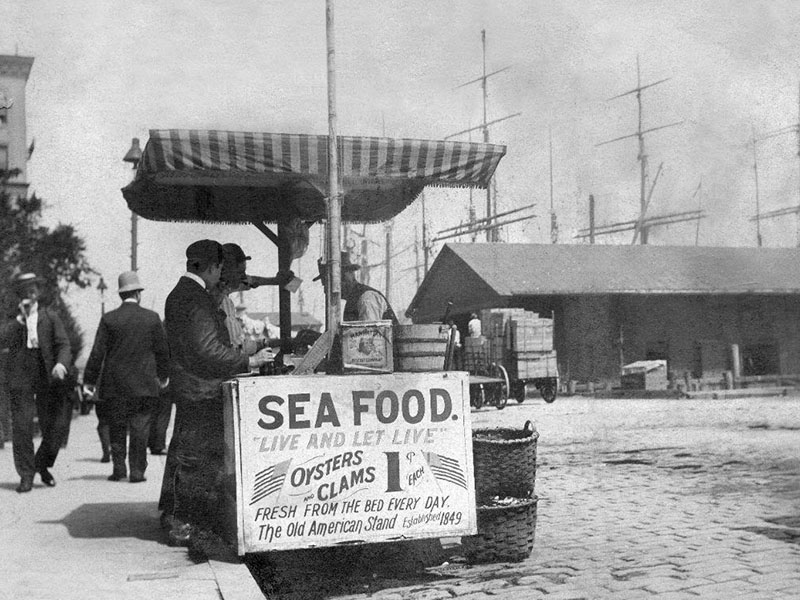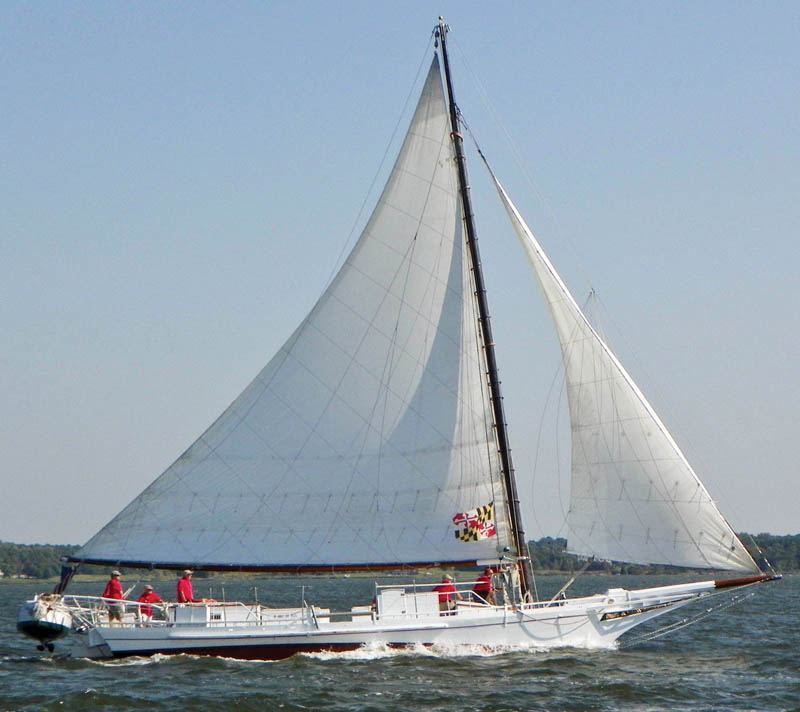There's been more than one kind of oyster battle on the Chesapeake.
Every place has a story. The stories that most clearly define the area of the Mid-Eastern Shore on the Chesapeake Bay are the stories of our relationship with the lowly oyster. It is a surprisingly dramatic story with tension and conflict, tradition versus progress, private property versus public access, and reverberates to this day.

One well-known story is the “Oyster Wars” of the latter part of the 1800s and early 1900s, a period of unlimited demand for oysters resulting in battles on the Bay involving cannons, guns, and the ramming and sinking of boats. While these violent battles were going on, there was also another type of battle, a “culture war” that was fought on a political battlefield. It was a conflict that set those who made their living on the water against those who believed that private oyster cultivation was necessary to preserve this natural resource and increase profit.
Early settlers to the area around the Chesapeake Bay had encountered such an abundance of oysters that any regulations limiting oyster harvesting were seen as unnecessary. This belief in an unlimited oyster resource in the Chesapeake was challenged by the arrival of dredge boats from New England in the 1820s that could gather bushels of oysters with one “lick” across an oyster reef. In response to this “invasion,” Maryland outlawed dredging and limited the harvesting and transporting of oysters to state residents. In 1865, Maryland legalized the dredging for oysters under certain conditions after advances in transportation and packaging made oyster harvesting much more profitable. Maryland did require that dredging only be done under sail, mandating inefficiency as a conservation strategy. Dredgers were required to have an external engine that could be lifted out of the water while dredging. These external engines, housed in what is known as a push boat, can still be seen hanging from davits on the few remaining skipjacks, the most popular dredging boat.

Despite restrictive regulations, sail-powered dredges were efficient enough to deplete the oyster beds. Oyster harvests started fluctuating and a procession of scientists, most notably Professor William Keith Brooks of John Hopkins University, promoted privatized oyster culture, aquaculture, as a solution to the diminishing harvest. Privatization through leasing of the Bay bottom was seen as a social benefit in the belief that personal interest is the strongest motive to prevent the needless destruction of oyster reefs. Privatization of oyster cultivation was also supported by the large packing houses that were interested in a steady supply of oysters and the railroads who shipped the oysters.
The “commons,” fallow land that could be used for grazing by the common man, had a long tradition in England. To the waterman, the Bay bottom and oyster reefs were a public trust, an “estuarine common.” While back in England, the small farmers lost the Commons grazing rights with the “Enclosure Act” in the 18th century, the waterman here in Maryland had an advantage the English small farmer did not have; he had the vote and a system of representation that favored the rural waterfront counties that outnumbered the inland counties.
The position of the anti-leasers regarding any proposed privatization was clearly articulated by Queen Anne State Legislator Legge: “The true policy of the State is to guard and protect our oyster grounds for the benefit of the citizens... and not sold to a few capitalists, thereby making the rich richer and the poor poorer.” While the reduction of oysters harvested in public waters in other states resulted in laws granting bottom leases for oyster planting and favorable to the growth of aquaculture, the same did not happen in Maryland. Instead, Maryland created a regulated estuarine Commons.
After numerous legislative skirmishes and editorials in the Baltimore Sun promoting leasing, proponents of the private cultivation of oysters were finally able to get a bill passed in 1906 that permitted the private leasing of barren bottoms. Bottom leases of productive natural oyster reefs were prohibited due to the legal precedent established back in 1808 in a case involving New Jersey oyster harvesters. The newly formed Shellfish Commission’s first requirement was to establish leasing rights by charting the entire state’s oyster ground to distinguish the natural oyster reefs from the leasable barren bottom. This took over six years and was led by an engineer, Charles Yates. While potential leaseholders thought that the Yates Survey settled the issue and opened the way for them to make the large capital investment necessary for aquaculture, watermen soon challenged the definition of barren bottom by getting the Shepard Act passed in 1914 that allowed any three or more state citizens to protest any existing proposed leasehold in county court by stating that they had obtained naturally occurring oysters from that area in the past five years. This uncertainty eliminated much of the incentive for leaseholders to make an investment.
The Voting Right Acts of the 1960s eliminated the disproportionate influence on legislation that rural counties had in the Maryland legislature. The growing awareness of the important role that oysters play in supporting the health of the Bay and the devastating impact that the MSX and Dermo diseases had on the oyster population has diminished much of the resistance to any proposal that would increase the stock of oyster.
Today half of the oysters harvested in the Bay come from aquaculture. However, the waterman tradition of self-reliant independence is still a strong value here on the Eastern Shore. It is the defense of these values by oyster harvesting watermen that caused the Conservation Commissioner Earle to observe about the oyster in 1930: This inoffensive bivalve has been the cause of more bitter fights in the legislative halls at Annapolis, more “political football” in the tidewater regions from whence it comes, more dissension and actual bloodshed among the watermen who harvest it than any other resource in our State.

The last skipjack built: Nathan of Dorchester
Oyster battles rarely make the headlines these days. Most of the once numerous skipjacks have been dismantled or left to rot. Thirty years ago, the last skipjack built, the Nathan of Dorchester was launched to provide a reminder of the many stories that shaped the character of this area and to educate the public of the oyster’s importance for the health of the Bay. It was christened on July 4, 1994, and will be celebrating its 30th anniversary with a rechristening this July 4 at Long Wharf in Cambridge, MD.
The rechristening celebration will begin at 10 a.m. and will include guest speakers, music, light refreshments, and the smashing of a champagne bottle. Preceding the celebration, at 9:30 a.m., a dramatic reading by the Nathan Town Crier of the Declaration of Independence will take place at the World War II Memorial in Long Wharf Park. Following the program will be opportunities to tour the Skipjack Nathan. Additionally, there will be several schooners docked at Long Wharf during the July 4 holiday.
For more information about the Nathan or to book a two-hour sail on Saturday, July 6, 13, 20, and 27 or a Third Thursday Sip ‘n Sail on July 18, visit skipjack-nathan.org. Custom charters are available as well; email [email protected].
By David Rose, who serves on the 30th Nathan birthday committee




